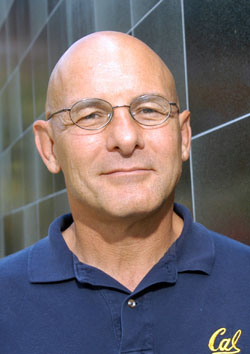Samuel D. Conte Distinguished Lecture: How to Hurt Scientific Productivity
02-09-2006

David A. Patterson
Pardee Professor of Computer Science
University of California, Berkeley
President, Association for Computing Machinery
Thursday, February 9 , 2006
STEW206 at 3:30pm
ABSTRACT:
Architects have a long history of designing computers with high peak performance that is difficult for scientists and programmers to achieve. ASCI supercomputers that achieve less than 10% of peak are just the latest examples, which go back to the Illiac IV of the 1960s.
Examples of recent decisions that increase peak performance AND the complexity of programming include out-of-order message delivery, pattern-sensitive interconnection networks, relaxed write consistency, very deep pipelines and correspondingly complicated branch predictors, opaque and complex prefetch engines, deeper and non-hierarchical cache levels, cluster of SMPs, limited-accuracy floating-point arithmetic, and so on.
I'll start the talk with four guidelines on how to follow the traditional path of HURTING the productivity of our scientific colleagues. This will be followed by comments on old vs. new conventional wisdom on computer technology and for scientific programming. The last part of the talk will give a half-dozen examples of how computer architecture can help scientific productivity, in case audience members are interested in this radical, unconventional goal.
I'll conclude with an overview of a new multi-university initiative to build a low-cost, research-oriented, massively parallel processor called RAMP, for Research Accelerator for Multiple Processors.
BIO:
David A. Patterson has been Professor of Computer Science at the University of California, Berkeley since 1977. He is one of the pioneers of both Reduced Instruction Set Computers (RISC) and Redundant Arrays of Inexpensive Disks (RAID), which are widely used. He co-authored five books, including two on computer architecture with John L. Hennessy. They have been popular in graduate and undergraduate courses since 1990.
Past chair of the Computer Science Department at U.C. Berkeley and the Computing Research Association, he was elected President of the Association for Computing Machinery (ACM) for 2004 to 2006 and served on the Information Technology Advisory Committee for the U.S. President (PITAC) from 2003 to 2005.
His work was recognized by education and research awards from ACM and IEEE and by election to the National Academy of Engineering. In 2005 he shared Japan's Computer & Communication award with Hennessy and was named to the Silicon Valley Engineering Hall of Fame.
Hosted by the Purdue University Department of Computer Science. A reception will be held after the talk. For additional information please call 765-494-9431 or email piegza@cs.purdue.edu.